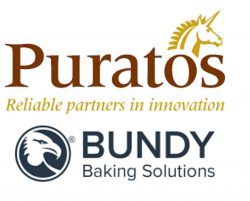
The Final Proof: Guaranteeing Gluten-Free Oats
April 24, 2017
By
Jane Dummer
A Canadian group is studying testing protocols for commercially ‘cleaned’ oats
According to Agriculture and Agri-Food Canada, between 2008 and 2012, the gluten-free market had a compound annual growth rate of more than 26 per cent and the global market is expected to hit US$6.2 billion by 2018.
In fact, in Canada, gluten-free baked goods are expected to grow over five per cent in value and four per cent in volume by 2018. This means some people are choosing gluten-free products out of choice and not for a medical condition. Sales of gluten-free products continue to grow by double digits based on improving the quality and selection available in mainstream channels. Market analysis by Packaged Facts suggests sales in the category will grow nearly 1.5 times in the U.S. market through 2019.
It has been two years since Health Canada has allowed “gluten-free” oats (packaged oat products that contain less than 20 parts per million of gluten) to be marketed as “gluten free” – in keeping with current labeling standards in the United States and Europe. Oats are naturally free of the offending gluten protein found in wheat, barley and rye. Unfortunately, though, most commercial oat products on the market have been cross-contaminated with wheat, barley and/or rye, the contamination occurring during harvesting, transportation, storage, milling, processing and packaging.
The good news is there are specialty companies in North America and Europe that produce pure, uncontaminated oat products grown on dedicated fields and equipment and packaged in dedicated gluten-free facilities. It’s important to note that it takes three years to fully transition a field for consideration and certification as “gluten free.” In addition to the dedicated food value chain, there is another way that has emerged to offer gluten-free oats. That method is known as “cleaning” regular commodity oats, a process that removes the wheat, barley and/or rye contaminates from the mixture using mechanical and optical techniques.
With the cleaning method, it’s critical to have robust and thorough testing protocols to verify there is no gluten contamination at the end. It’s been discovered that after the cleaning method has been implemented, gluten contamination can fall into “hot spots” and it is not homogeneously distributed throughout. Therefore, if the sampling protocol is not vigilant, oats with gluten contaminants may sneak into the “gluten-free” products and end up on the store shelf. Quaker Oats, which has third-party gluten-free certification in its facilities, is a leader in this area, conducting research to help identify the best sampling protocols.
Canadian Celiac Association (CCA) operations manager Sue Newell says the CCA is in the second year of a three-year project, funded by Agriculture and Agri-Food Canada, that is studying the issue.
“Activities of the project include program sampling grains and seeds from the fields to the mill, so we can get information on the amount, source, and methods of contamination,” Newell says. “This program includes oats and hull-less oats, lentils, hemp, and flax. The Canadian Grains Commission is involved in this part of the project. A second project outcome is a new guide indicating how to sample and test for gluten contamination along the production process, pulling together information from experts in the field. The goal is to look at general principles rather than specific information about specific tests.”
Terra Cotta Foods Ltd., located in Georgetown, Ont., has been on the forefront of producing gluten-free cookies. President and CEO Jason Brass describes why it was important for the business to achieve gluten-free certification in 2013, saying, “Third-party certification provides our customers with the confidence that our practices are transparent and rigorous to ensure gluten free products are reaching the store shelves. We have worked hard to guarantee our unique and dedicated gluten free production room is providing quality gluten-free products.
“For example, we not only review the certification of analysis for gluten free oats coming into our facility, we conduct an additional internal test to verify the oats contain less than 20 parts per million of gluten. It’s one more step we have implemented to gain the trust of our customers and to support our commitment and responsibility to the gluten-free community.”
Jane Dummer, RD (www.janedummer.com), known as the Pod to Plate Food Consultant, collaborates and partners with the food and nutrition industry across North America.
Print this page

Leave a Reply